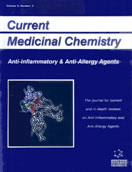Abstract
Articular cartilage injuries and osteoarthritis are very frequent clinical problems for which no satisfactory treatment has been established yet. Therapeutic strategies aim at an inhibition of matrix degradation and/or the stimulation of cartilage anabolism in the diseased joint. In a number of studies, the administration of anti-catabolic or antiinflammatory cytokines such as IL-1Ra, sTNFαR, IL-4, IL-10 or IL-11 to joints affected by cartilage destruction has proven to be beneficial. However, the clinical utility of this strategy is limited by the enormous costs due to the short halflifes of these proteins in vivo. The transfer of the respective genes may provide a more sustained delivery of such molecules at the desired location. Lesions with substantial loss of cartilage tissue and final stages of osteoarthritis require the generation of new hyaline cartilage, because the lesions hardly show any endogenous repair response. Surgical approaches such as subchondral drilling or transplantation of cells or tissue grafts often fail to restore the articular surface, facing the problem of incomplete chondrogenesis or rapid degradation of the repair tissue. In experimental studies, certain growth and differentiation factors including members of the TGF-ß superfamily, IGF-1 or FGF as well as transcription factors such as SOX-9 have proven their potential to stimulate chondrogenesis and synthesis of cartilage-specific matrix components, allowing the formation of a hyaline cartilage-like repair tissue. Targeted cell-mediated gene transfer could ideally combine the supply of chondroprogenitor cells with the production of therapeutic factors directly at the site of the lesion. This review summarizes the relevant pathomechanisms and different gene therapy strategies for the treatment of cartilage injuries and osteoarthritis. The advantages and disadvantages of different therapeutic genes, target cells and vectors for intraarticular gene transfer are discussed on the basis of the results of gene therapy studies on various animal models.
Keywords: gene transfer, cytokines, growth factors, osteoarthritis, cartilage repair, tissue engineering, mesenchymal stem cells
 5
5

